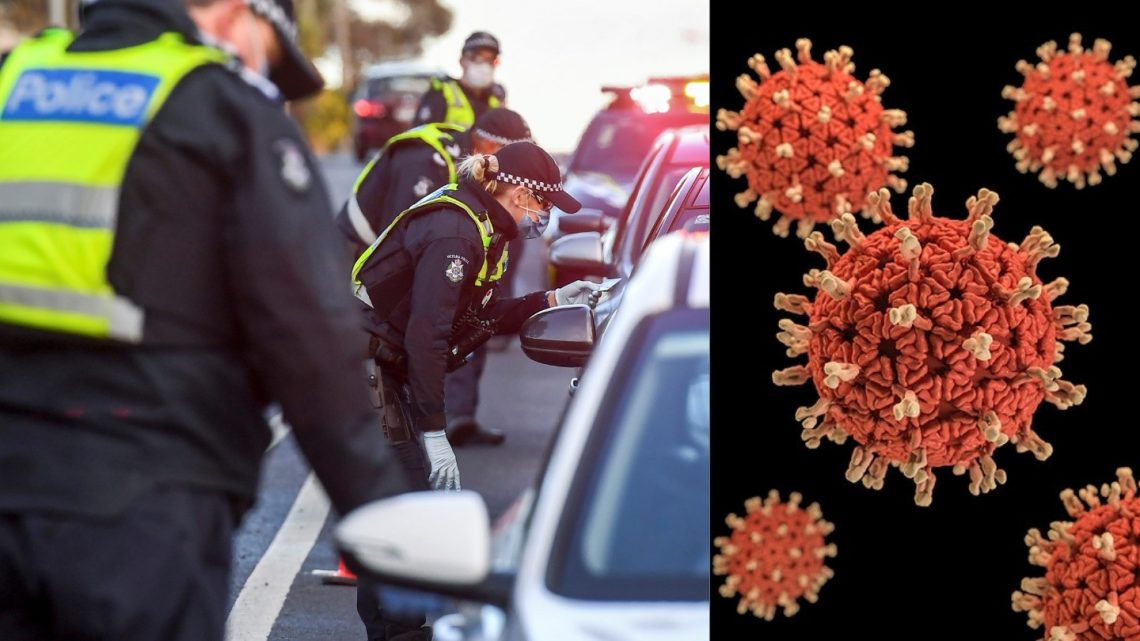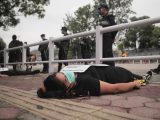
Here’s What You Need to Know About Australia’s ‘Second Wave’ of COVID-19
July 2, 2020Stage three “stay-at-home” coronavirus restrictions were reinforced in parts of Melbourne, Australia on Thursday morning, as the state of Victoria struggles to contain a recent spike in COVID-19 cases.
The reinforced lockdown, currently applied to a total of 36 suburbs across 10 postcodes, means that about 300,000 people in those affected areas can only leave home for work, school, exercise, giving or receiving care, or buying essential supplies.
There are currently 370 active cases in Victoria, with 77 new cases recorded in the past 24 hours. State premier Daniel Andrews has indicated that if the spike continues, more suburbs could face increased restrictions.
Police checkpoints were set up at the boundaries of the affected suburbs, with officers asking drivers to prove whether or not they belong in the postcodes under lockdown orders.
In an attempt to dupe the checkpoints and get around the measures, some residents of hotspot areas have reportedly tried to change the address on their driver’s licence, providing false home addresses to VicRoads.
Elsewhere, neighbourhoods have been split down the middle by what residents are calling an “arbitrary” carving up of suburbs. At the border of Footscray and West Footscray, in Melbourne’s east, the lockdown boundary runs down the middle of a suburban street.
“That feels totally redundant,” one resident told The Guardian. “How are they going to police that? If the police pull me up and ask where I live I’ll just say the other side.”
Addressing these concerns in a press conference yesterday, Premier Andrews states that "the decisions about where these lockdowns would be applied is a matter of public health. It is not as if I sat down with a map and drew these boundaries, they have been drawn by our public health experts, based on data."
Many have criticised the Victorian government’s “suburb by suburb” containment approach, though, with some suggesting that the entire state should be put into lockdown in order to properly stem the spread of the virus. And even if Andrews is reluctant to commit to a lockdown of that scale, other state jurisdictions are taking it upon themselves to bar domestic travel in and out of Victoria.
Queensland Premier Annastacia Palaszczuk announced yesterday that, as of July 10, the state’s borders will reopen to visitors from all states and territories other than Victoria. Starting this Friday, anyone who has travelled from Victoria to Queensland, including Queenslanders, will have to quarantine for 14 days at their own expense—and those caught lying about having been in Victoria face $4,000 fines.
"Please do not go to Victoria," Palaszczuk said. "We cannot risk removing our border restrictions for those people coming from areas in Victoria right now."
New South Wales premier Gladys Berejiklian has taken a similarly hardline approach towards Victorians, warning residents in her state to not let Melburnians into their homes.
“You are the boss of who comes into your home,” she said. “Do not allow anyone from a hot spot in Melbourne or from greater Melbourne to come into your home. You have the right to say no.”
Despite these measures, however, the Victorian outbreak was confirmed to have made its way across state borders this morning, when a man in the Northern Territory tested positive to COVID-19 after returning from a hotspot area in Melbourne. The Darwin man, in his 30s, had reportedly visited family in one of the affected suburbs before returning to the NT. It is the state’s first case since April.
Shortly thereafter, a Sydney man who spent two weeks in hotel quarantine in Victoria tested positive to COVID-19 after returning to NSW. The man had a test after his manager at the Woolworths shopping centre where he works noticed he was displaying symptoms. Fifty staff at the store have since been told to self isolate.
The Victorian outbreak has been steadily escalating over the past fortnight, after a number of coronavirus clusters were identified throughout Melbourne. These initial clusters were linked to a series of large family gatherings, as well as a number of Melbourne hotels that were being used to quarantine recent arrivals into Australia from overseas.
These hotels have become a subject of serious interest, with Premier Andrews suggesting earlier this week that some of the COVID cases may have been spread through incidents of staff carpooling or even sharing a cigarette lighter.
"[They were] keeping their distance but sharing a lighter between each other," he said. "An innocent thing that can lead to transmitting the virus.”
Explosive allegations have been raised more recently over the possibility that hotel staff and security guards were sleeping with guests who may have been infectious at the time. This has prompted questions as to how well the hotel staff and guards—hired on a contract basis—were trained in the use of PPE and infection control.
Premier Andrews recently announced an inquiry into the operation of the hotel quarantine program. Speaking to the ABC last night, he noted that "that process should be done at arm's length and that's exactly why we have announced a really important inquiry.”
"What is best here is to deal with those things that we can influence. We can't go back, we can't change beyond the very important reforms and the changes that have been made right across the journey,” he said. "We have got more staff in there that come from different places, we are confident today that challenges that occurred many, many weeks ago will not be repeated."

